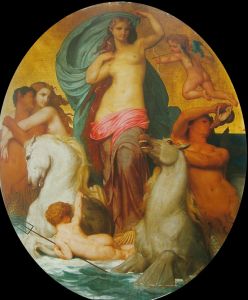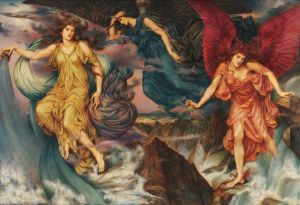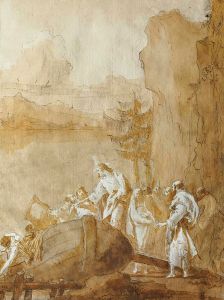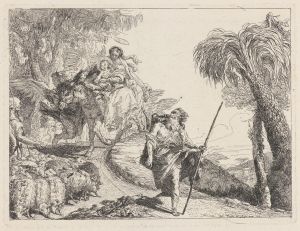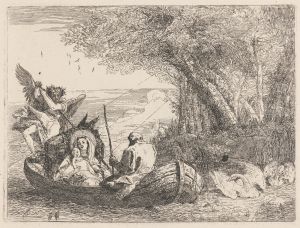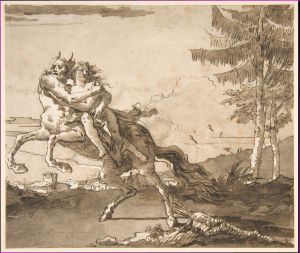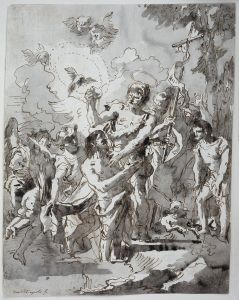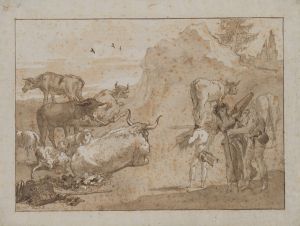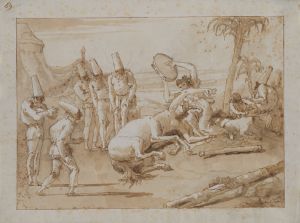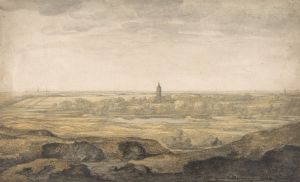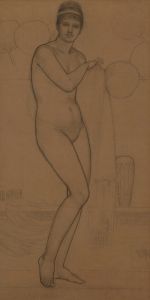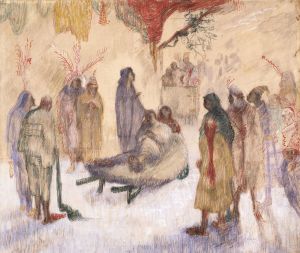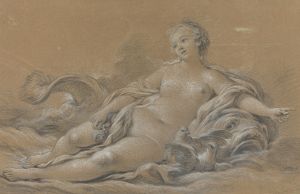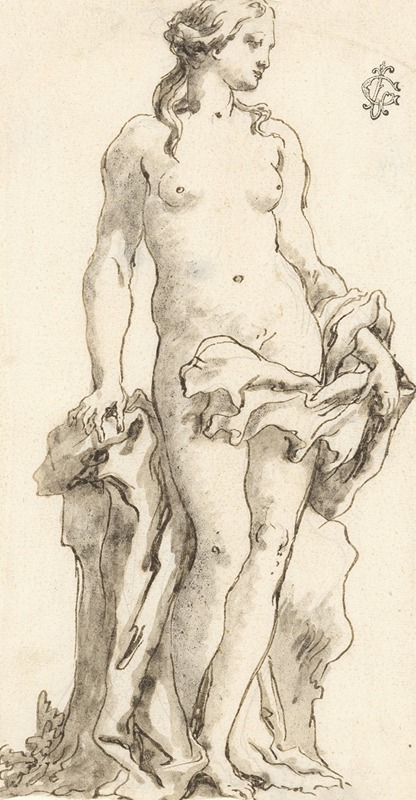
Venus
A hand-painted replica of Giovanni Domenico Tiepolo’s masterpiece Venus, meticulously crafted by professional artists to capture the true essence of the original. Each piece is created with museum-quality canvas and rare mineral pigments, carefully painted by experienced artists with delicate brushstrokes and rich, layered colors to perfectly recreate the texture of the original artwork. Unlike machine-printed reproductions, this hand-painted version brings the painting to life, infused with the artist’s emotions and skill in every stroke. Whether for personal collection or home decoration, it instantly elevates the artistic atmosphere of any space.
Giovanni Domenico Tiepolo, an Italian painter and printmaker, was an influential figure in the 18th-century Venetian art scene. He was the son of the renowned artist Giovanni Battista Tiepolo and followed in his father's footsteps, contributing significantly to the Rococo movement. Among his various works, the painting "Venus" stands out as a testament to his skill and artistic vision.
"Venus" by Giovanni Domenico Tiepolo is a painting that reflects the artist's mastery of color, composition, and classical themes. Although specific details about this particular painting are limited, it is consistent with Tiepolo's broader oeuvre, which often depicted mythological and religious subjects with a distinctive flair. His works are known for their dynamic compositions, vibrant colors, and the ability to convey a sense of movement and emotion.
In the 18th century, the depiction of Venus, the Roman goddess of love and beauty, was a popular subject among artists. This theme allowed painters to explore ideals of beauty, sensuality, and the divine, often drawing on classical mythology for inspiration. Tiepolo's interpretation of Venus would likely have been influenced by these traditions, showcasing his ability to blend classical themes with the stylistic elements of the Rococo period.
Tiepolo's style is characterized by its lightness and elegance, often employing a pastel palette and fluid brushwork. His paintings frequently feature a sense of theatricality, with figures that appear to be caught in mid-motion, lending a dynamic quality to his compositions. This approach can be seen in his other works, such as frescoes and religious paintings, where he skillfully balances narrative and decorative elements.
As a member of a prominent artistic family, Giovanni Domenico Tiepolo was deeply influenced by his father, Giovanni Battista Tiepolo, who was one of the leading painters of his time. The elder Tiepolo's grand frescoes and large-scale compositions left a lasting impact on Domenico's work. However, Giovanni Domenico also developed his own distinct style, which is evident in his paintings and etchings.
In addition to his paintings, Giovanni Domenico Tiepolo was an accomplished printmaker. His series of etchings, including the "Capricci" and "Scherzi di Fantasia," showcase his imaginative approach to art, blending fantastical elements with classical themes. These works further demonstrate his versatility and creativity as an artist.
While specific information about the painting "Venus" is scarce, it can be appreciated within the broader context of Giovanni Domenico Tiepolo's artistic achievements. His contributions to the Rococo movement and his ability to reinterpret classical themes have secured his place in art history. Through his paintings and prints, Tiepolo continues to be celebrated for his technical skill, imaginative compositions, and the enduring beauty of his work.





